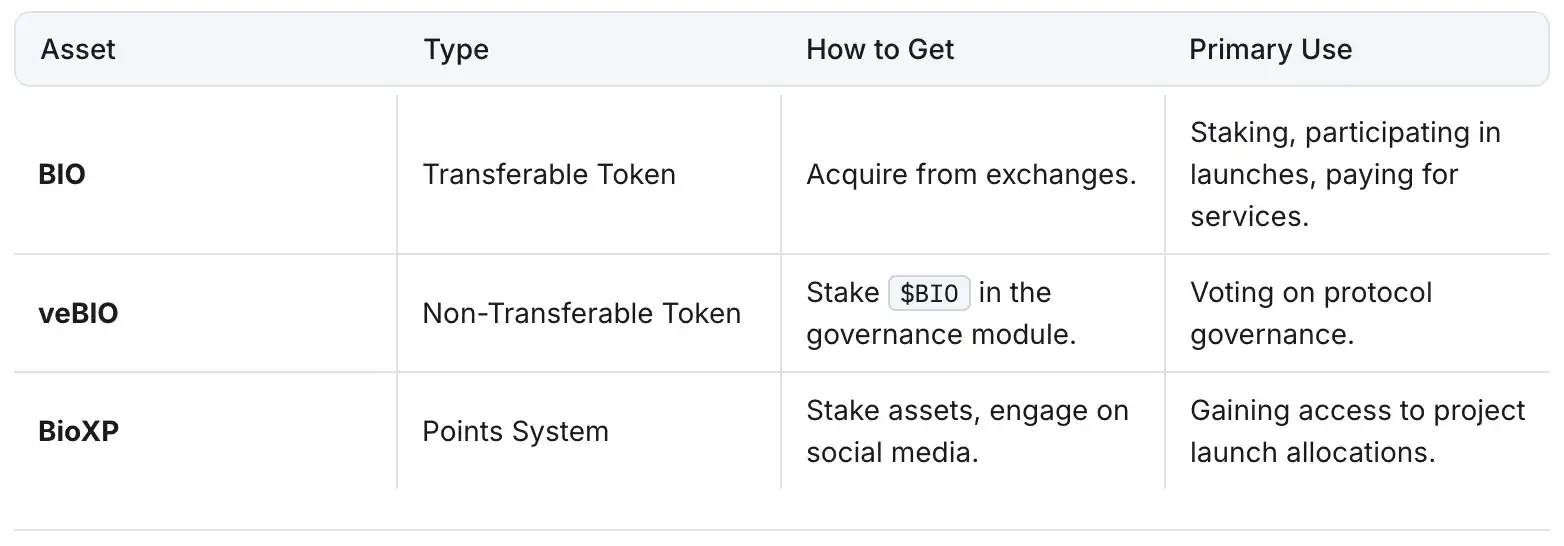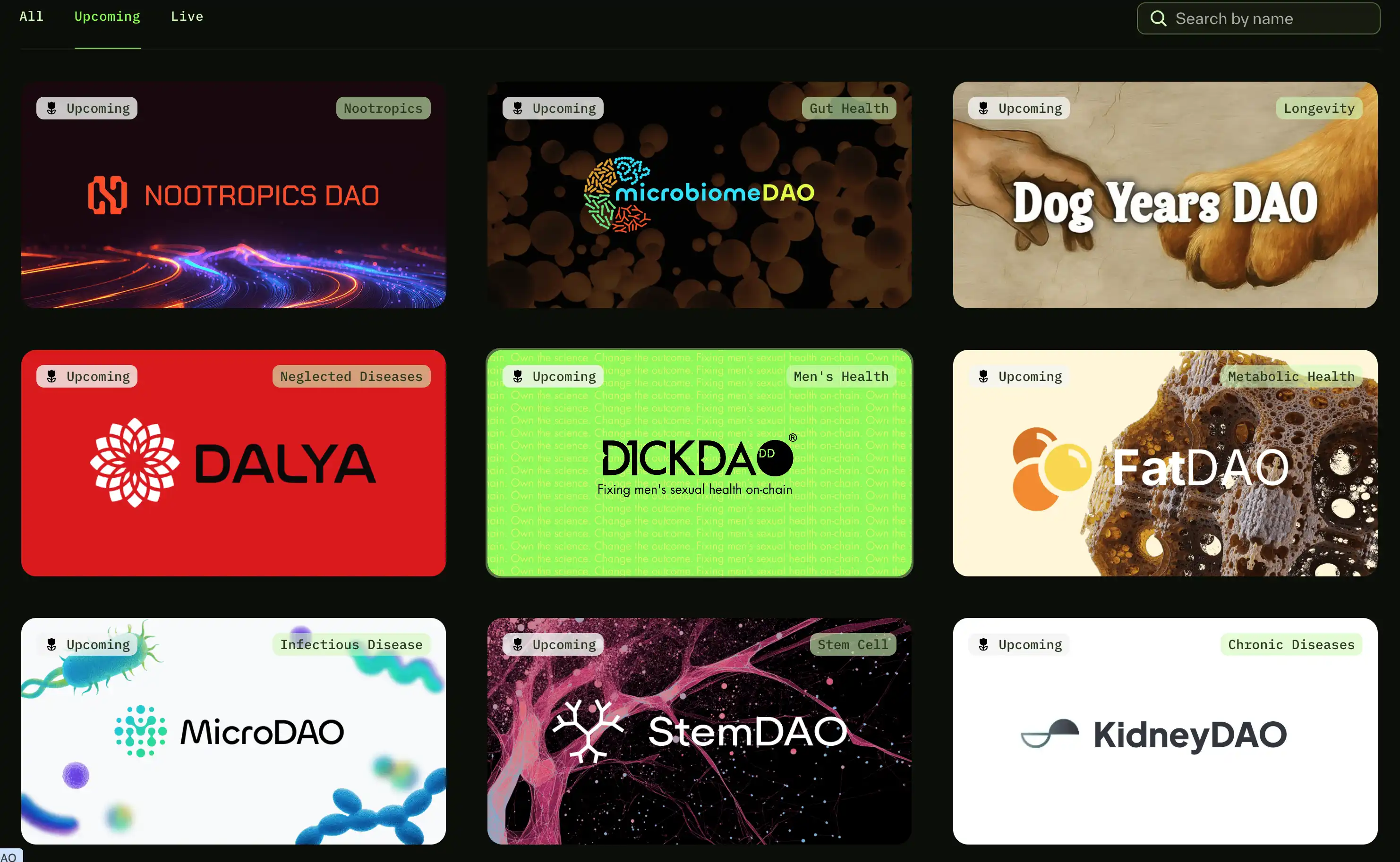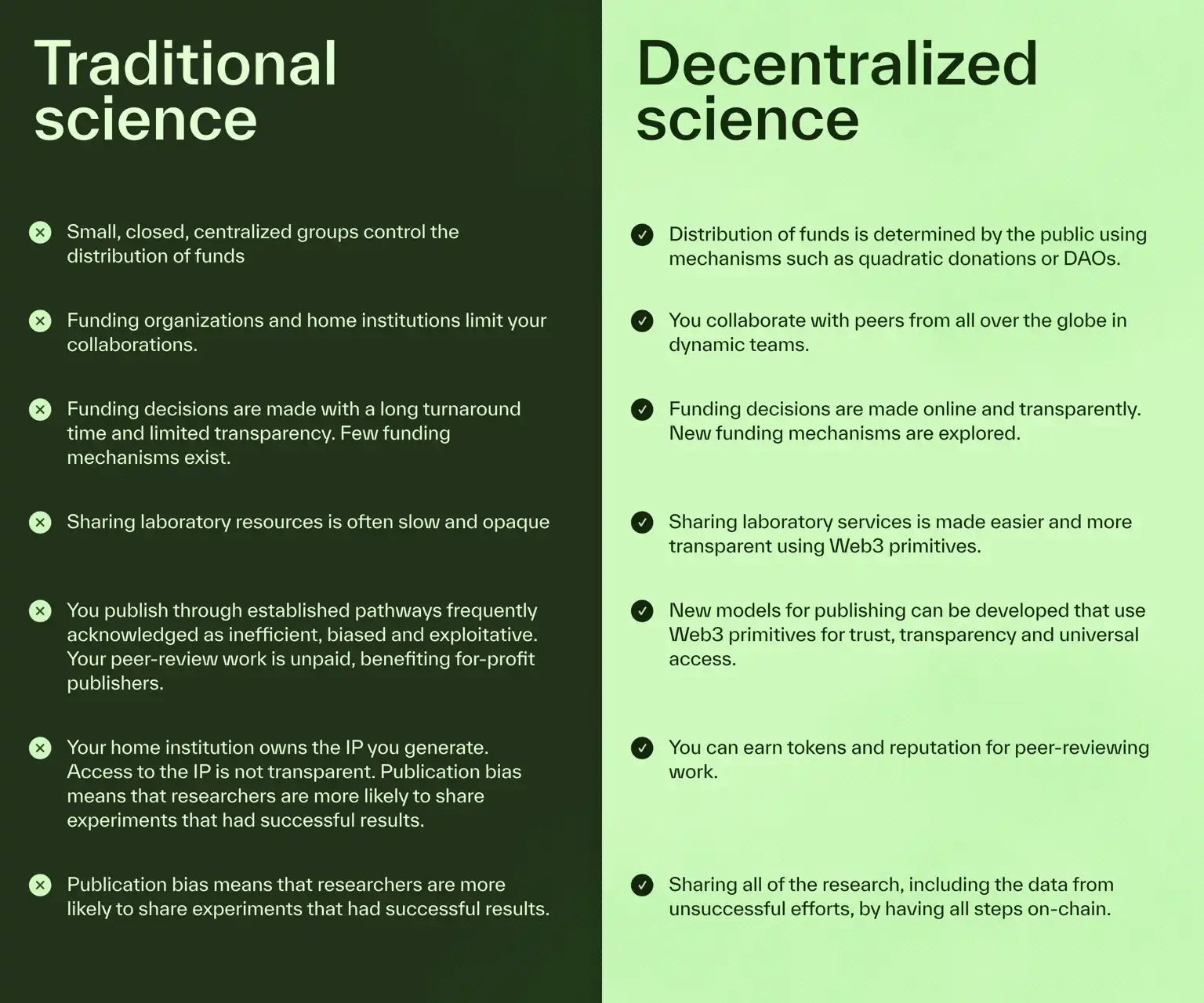Original author: kkk
Reprinted by: Daisy, Mars Finance
$BIO surges, what should we pay attention to?
$BIO, the leader of the DeSci track, once regarded as a pioneer in the integration of scientific research and cryptography, has been under pressure since its launch in January this year. Despite the support of top investors including Vitalik Buterin and CZ, it has not been able to escape the dual impact of market conditions and liquidity. Its market value has shrunk by 95% from its opening high, becoming a focus of community dissatisfaction and doubt. It has also caused the track, which once produced myths of hundreds of millions of market capitalization such as $RIF and $URO, to fall into a trough.
However, with the recent official launch of BIO Protocol V2, which introduced new mechanisms such as Launchpad and staking points, the total amount of staked BIO exceeded 100 million within a week of its launch, and its market value quickly doubled to over US$200 million, once again igniting the market's attention and imagination for the DeSci track.

Why did the luxurious $BIO fall from grace?
BIO's IPO was originally a highlight for the DeSci sector: Tier-one exchanges like Binance, OKX, and Kraken all participated, with trading volume exceeding $2 billion on the first day of the TGE, and FDV reaching $250 million at one point, making it the most sensational scientific cryptoasset offering of early 2025. However, behind the excitement lay the seeds of a price crash.
However, the excitement of this celebration was short-lived. BIO was issued through an auction model, resulting in a higher initial circulation ratio than most new coins. This, coupled with the inflated valuation upon listing, made the price appear inflated despite a lack of immediate utility. Initial market purchases were driven more by narrative and sentiment than practical value. With key features like the Launchpad, staking system, and BioXP points still in the planning stages, investors quickly realized that their tokens offered no tangible returns in the short term, including participation income or governance rights. This discrepancy between valuation and use cases was the primary driver of the price decline.
BIO's decline is also closely related to its pacing. Core features weren't launched simultaneously with the TGE, and market confidence began to erode during the waiting period. Furthermore, Molecule Catalyst's independent launchpad operation diverted funds and attention from ecosystem expansion, weakening the cohesion of the main platform. Furthermore, with the macro market entering a phase of declining risk appetite, capital rapidly withdrew from projects with high FDV and no immediate cash flow. Lacking consistent news support and a consistent product launch cycle, BIO went from a star project at the beginning of the year to a slump characterized by sparse transaction volume and plummeting prices.
The Resurgence of BIO Protocol
Create a scientific research acceleration experimental field
In the first half of 2025, BIO Protocol experienced a rollercoaster ride—from its peak at the beginning of the year to its lowest point in price, yet its momentum never slowed. Not only did it achieve impressive market success in the DeSci field, it also propelled several biopharmaceuticals toward clinical trials, giving "on-chain research" its first glimpse of real-world medical validation.
The price pullback hasn't dampened the team's ambitions; instead, it's fueled further development efforts. In May, BIO, through community governance, postponed the unlocking of team and advisors, signaling to the market that they're in it for the long haul. Research progress is also impressive. VitaRNA and VitaFAST both initiated clinical trials in the UAE, moving from concept to enrollment in just 11 months, compared to the traditional 4-6 years. Fourteen compounds with AI-predicted success rates exceeding 85% are awaiting efficacy readouts in Q3. Meanwhile, five new BioDAOs—QBIO, Long Covid Labs, Curetopia, SpineDAO, and MycoDAO—have been established, raising a total of $8.9 million this year, fueling this high-speed research engine.
V2: The transition from DeSci 1.0 to DeSci 2.0
In addition, the BIO team officially launched Bio Protocol V2 in August, with the goal of putting scientific research financing and execution into "high-speed mode" and solving the pain points of the DeSci 1.0 stage, such as high FDV initial launch, lack of real-time functions, and a fragmented ecosystem.
The core of V2 lies in four major engines:
Low FDV fixed price launch: Following the successful paths of Pump.fun and Virtuals, V2 lowered the project's starting valuation to $205,000 USD FDV. 35% of tokens were sold directly, and all $BIO raised was injected into the liquidity pool. This created depth and price momentum from the start, allowing the community to be highly engaged with the project.
BioXP Points System: Quantify behaviors such as staking, LP, on-chain interaction, and social communication into points, which are linked to the DeSci Score. Points are valid for 14 days and are used to allocate quotas for low-FDV projects. High-participation users will continue to enjoy priority opportunities.
Staking & veBIO: Staking BIO not only earns bonus points, but also obtains governance votes; staking other assets in the ecosystem has higher point yields, encouraging support for the entire network.
Liquidity Engine: Automatically generates LPs after the initial offering and charges a 1% handling fee for each transaction in the secondary market (70% goes to the project treasury and 30% to the agreement), forming a positive cycle of "active transactions - increased scientific research funding - advancement of research results - renewed market enthusiasm."

Accelerate implementation and welcome the new DeSci cycle
VitaRNA and VitaFAST are bringing DeSci from concept to reality. Two drugs will undergo simultaneous trials in the UAE, Singapore, and Switzerland, potentially becoming the first fully funded by DeSci to enter clinical trials within two years at a cost of less than $500,000. This not only breaks the cost barrier of traditional drug development, which often takes years and tens of millions of dollars, but also sets a benchmark for on-chain research. Simultaneously, BIO is collaborating with Pfizer on a pilot project to explore a compliant intellectual property tokenization (IPT) model, establishing a new capital flow and value distribution mechanism for future drug development.
Bio Protocol will launch a decentralized research agent to automate key research processes such as drug screening, clinical operations, and funding allocation. The upcoming BIO Copilot will serve as an on-chain research assistant for scientists, advancing research to a programmable, scalable, and collaboratively machine-driven stage. This will free research from the constraints of human resources and allow it to enter a high-frequency, intelligent, and iterative trajectory.
Furthermore, the flywheel of capital and the market is quietly starting to spin. Launchpad 2.0 plans to launch 10-20 low-cap projects in the coming months, covering areas such as agents, IPTs, and research tools, with an average fundraising target of $70,000. Base Chain will be the first to launch, followed closely by Solana. Meanwhile, the "Founding LP Program" is attracting liquidity providers willing to invest at least $100,000 in BIO LPs, rewarding participants with increased returns, bonus points, priority allocations, and exclusive support. Drawing on the flywheel model of high-yield IPOs like Virtuals, BIO aims to ignite a new wave of market enthusiasm, forming a closed loop of research funding, token flows, and information flows, and driving the advent of "Scientific Singularity."

What is DeSci? A decentralized engine to accelerate scientific research
If the operating logic of traditional science is like a huge steam engine, then decentralized science (DeSci) is more like a high-speed electric motor - lighter, faster, and more transparent.
In the past, funding for scientific research was almost entirely controlled by government foundations, academic institutions, and large pharmaceutical companies. From project application to funding receipt, a research project often took months or even years to review and approve. Research findings were often locked behind exorbitant paywalls. Even for taxpayer-funded research, the general public could not access data and papers freely. The storage of research data, ownership of intellectual property, and the translation of research findings were all controlled by centralized institutions and processes. While robust, this model also resulted in inefficiency, conservatism, and a natural resistance to disruptive innovation.
DeSci aims to disrupt this top-down, slow, and closed scientific ecosystem. It leverages blockchain's open ledger to ensure full transparency of funding flows, research progress, and data usage. It replaces small review panels with decentralized autonomous organizations (DAOs), allowing the fate of research projects to be decided by a broader community vote. And it employs a tokenized incentive mechanism to deeply align early supporters with the benefits of research results, thereby attracting more funding and talent. This model not only shortens the funding cycle for scientific research but also breaks down disciplinary and regional barriers through global collaboration, allowing innovative ideas that previously struggled to secure funding to gain traction.

BIO Protocol is undoubtedly a representative and ambitious player in this field. It not only provides early-stage financing channels for biotech projects but also builds a comprehensive infrastructure encompassing project screening, fundraising, on-chain liquidity management, data transparency, and research automation. Through BIO, researchers can crowdfund research directly from the global community, much like launching a crypto project. Investors can participate in projects from the earliest stages and share in the profits when research results are commercialized. Compared to traditional scientific research, BIO aims to create a scientific ecosystem where everyone can participate and benefit, without waiting for funding approval and without being monopolized by a single institution.
Summarize
BIO Protocol experienced significant price fluctuations, from its high-profile launch at the beginning of the year to a mid-year low. Now, with the launch of V2, it has experienced a temporary rebound. The new low FDV launch, point staking, and liquidity mechanisms have injected new momentum into the ecosystem and reignited market interest in the DeSci sector. However, whether this rebound can continue and generate stable returns from new IPOs will depend on the synergy between the project's launch schedule and the market environment, and short-term uncertainty remains.


